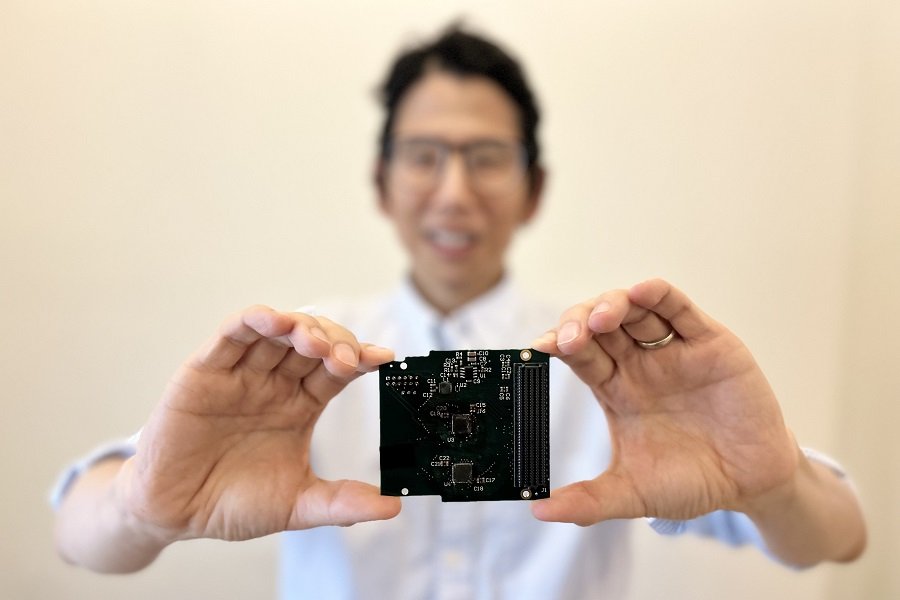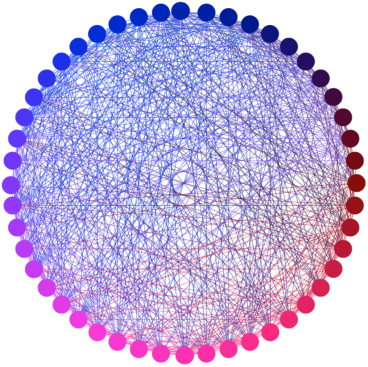All-to-all connected quantum-inspired Ising solver chip for faster, energy efficient solutions to optimization problems

The team has used existing chip manufacturing technologies and design software to develop a chip that emulates quantum properties
Researchers led by Distinguished McKnight University Professor Chris Kim have fabricated an Ising solver chip that features all-to-all architecture using conventional semiconductor technology. The use of all-to-all architecture overcomes the challenges typically encountered when using traditional architectures and offers advantages such as faster computation with fewer additional pre/post-processing overheads. These are particularly expedient for resolving complex optimization problems, most common and relatable examples of which are scheduling (for instance, airline schedules) and logistics (delivery of goods and services).
The details of the chip design and test results are published in Nature Electronics in a paper titled, “An Ising solver chip based on coupled ring oscillators with a 48-node all-to-all connected array architecture.” This is the first paper to emerge from research supported by the $6.8 million DARPA Quantum-Inspired Classical Computing (QuICC) program grant that Kim was awarded earlier this year.

Kim and his team of scientists have designed this particular Ising solver chip keeping in mind that problems in the real world are most efficiently and effectively solved by all round connectivity, where messages in the form of signals can be sent and received to multiple entities/nodes simultaneously. Such an arrangement enables free exchange of information from each node to all other nodes which speeds up time to solution. In particular, when compared to prevailing limited connectivity architectures where one node can communicate with a maximum of 15 other nodes at any one point in time, in the current approach almost 50 nodes can communicate with each other simultaneously. Under the locally-connected architecture approach, one way to work around its limitations is to replicate nodes to expand each node’s connectivity with other nodes. But this strains the system at the hardware level besides also limiting the outcome in terms of time and connectivity.
To overcome these limitations, the team have adopted a particularly unique approach: they use quantum computing as a launching point while situating the chip design within existing silicon-based semiconductor technology. Quantum computing uses the laws of quantum mechanics to solve complex problems that classical computers struggle with. However, even though quantum computers can tackle problems of increased complexity that might be beyond the capabilities of a classical computer, they pose hardware design challenges and are easily affected by thermal variations and other forms of noise. The chip designed by the researchers straddles the worlds of quantum computing and classical silicon-based computing by developing the quantum-inspired Ising solver chip that emulates qubit behavior using classical device technologies. The design enables faster computation, so you can arrive at a solution rapidly while also consuming less energy. Besides, the use of existing silicon technology provides the added advantage of better scalability. In a nutshell, the team has taken existing chip manufacturing technologies and design software, to demonstrate a microchip that can find the optimal solution by emulating quantum properties.
Emphasizing the significance of the chip’s design, lead scientist Kim says, “The Ising solver chip our team has developed offers distinct advantages: it can solve complex optimization problems rapidly by offering faster computation, consuming less energy, and better scalability.” Placing it within the context of daily living, he says, “This technology can offer faster and cheaper solutions to problems where we are seeking to minimize time, costs, energy consumption, offer quicker services, or increase manufacturing efficiencies. At the end of the day, the research can impact us all by offering a better quality of life.”
The research was funded by the United States Defense Advanced Research Projects Agency (DARPA). Kim and his team received a $6.8 million grant through the DARPA Quantum-Inspired Classical Computing (QuICC) program earlier this year.
Besides Kim, the research team included Department of Electrical and Computer Engineering researchers Sachin Sapatnekar (Distinguished McKnight University Professor), Hanzhao Yu (Ph.D. candidate), William Moy (postdoctoral researcher), and Hao Lo (Ph.D. candidate).
Read the full paper titled “An Ising solver chip based on coupled ring oscillators with a 48-node all-to-all connected array architecture” without a subscription.